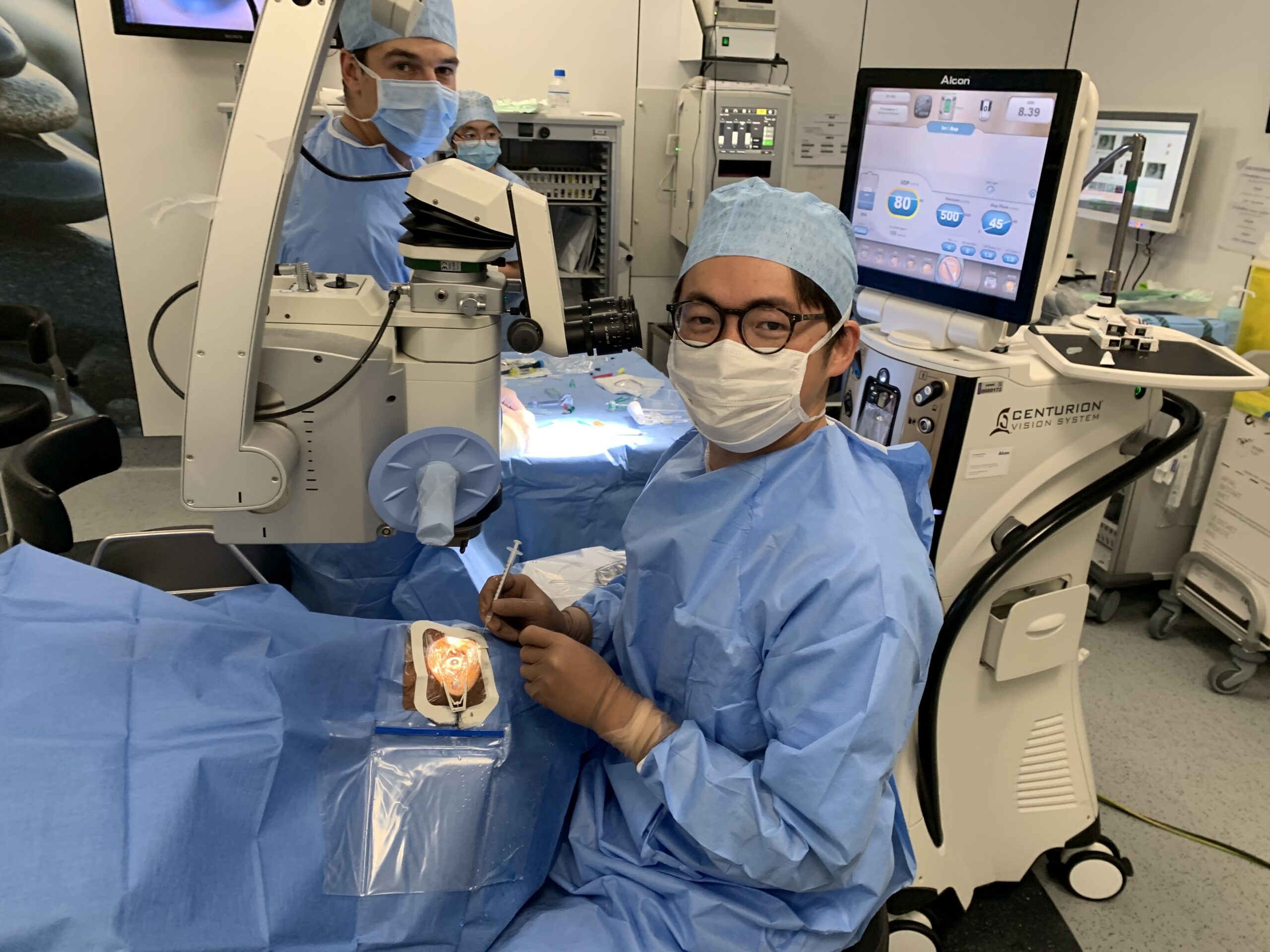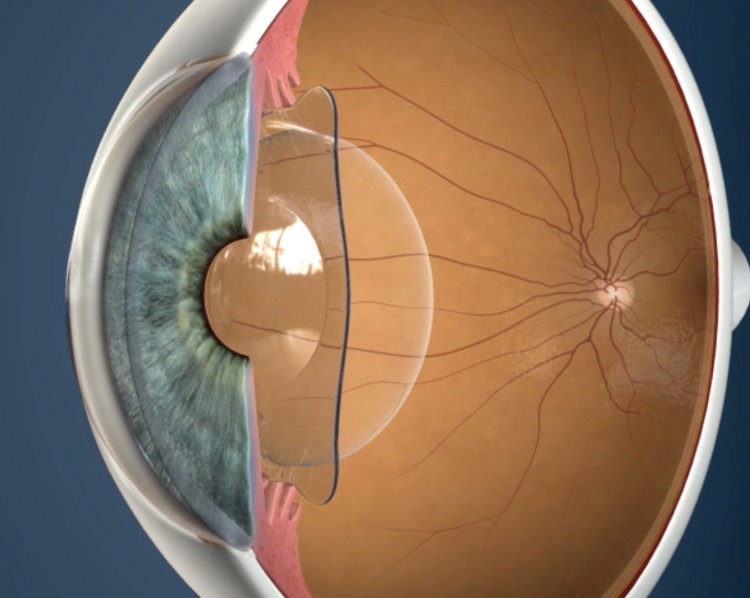ICL phakic implants
ICL phakic implants are indicated for high myopia that cannot be corrected by laser refractive surgery
It consists of placing an implant that corrects high myopia in front of the lens without replacing it (as in the refractive lens exchange above)
Why operate? :
In a normal eye, the path of light rays is modified by the cornea and the lens to allow it to converge on the retina.
to converge on the retina. The myopic eye being too large, the light rays converge in front of the
in front of the retina. The hyperopic eye is too small and the light rays converge behind the retina.
The astigmatic eye is characterized by the difference in power of the different meridians of the cornea.
This type of operation consists of introducing into the eye a refractive lens of adapted power intended to
to modify the path of the light rays to correct the visual defect(s). It is reserved for the
correction of strong myopia and strong hyperopia pure or associated with astigmatism.
Hospitalization :
Your ophthalmologist will suggest an immobilization adapted to your case. It is of short duration.
Anesthesia :
The eye is anaesthetized only by the instillation of drops. A general anesthesia is also possible.
The choice results from the co-decision of the intervening parties. It takes into account, if possible, your wishes.

Description of the procedure:
It is performed in a sterile surgical environment and under a microscope.
An incision is made, which may or may not be sutured at the end of the procedure.
The implantation can be performed either in front or behind the iris. Your surgeon will advise you on The surgeon will advise you on the most suitable implant for your case after having carried out the necessary investigations.
The removal of a small fragment of iris is sometimes necessary. In some cases, it can be done with a laser several days before the laser several days before the operation.
Incidents or operative difficulties: these are rare and unpredictable and can lead to the cancellation of the the implantation. The procedure can be complicated by trauma to the lens or cornea. the cornea. A hemorrhage may occur, which will generally disappear within a few days.
Usual postoperative evolution:
In the vast majority of cases, the operated eye is slightly tender. Any violent pain in the hours following hours after the operation should be reported to the surgeon.
The vision improves very quickly.
Local care is reduced to the instillation of drops and the wearing of a protection according to modalities and during a period that will be specified to you. during a period that will be specified by your surgeon. It is sometimes necessary to proceed with the removal of sutures.
Professional activity, the use of machines or dangerous instruments, and driving are not recommended for a limited period of time to be defined by your surgeon.
The regulations concerning the visual aptitudes of professions are continually modified. It It is therefore essential that you check with the relevant authorities yourself whether a refractive refractive surgery is accepted (army, police, gendarmerie, navy, firemen, SNCF, air or road transport, etc.)
More information about the ICL implant https://be.discovericl.com/a-propos-de-icl
Source : SFO

CONTACT
You want to make an appointment? You can either call one of the 5 sites via the button below, or make an appointment directly online in the Contact section, or send me a message in the Contact section
The ophthalmology secretaries and Dr. Qin’s team are available to answer all your questions and requests for information in order to make the best choice. I will be pleased to welcome you at one of the 5 sites.
Discover the 5 sites

